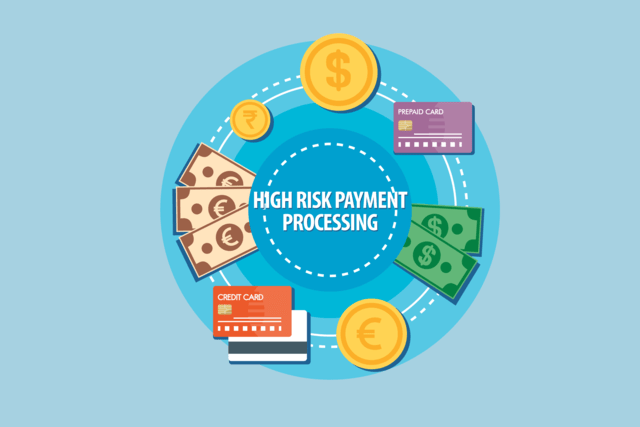AUTHOR :HAANA TINE
DATE :11/12/2023
The Rise of Shopify High-Risk Payment Processors

In the rapidly evolving world of e-commerce[1], businesses are constantly adapting to new trends and technologies. One of the key areas that have seen tremendous growth and transformation is payment processing. As more entrepreneurs turn to online platforms like Shopify to build their stores, understanding the payment gateway landscape becomes crucial. In particular, the demand for Shopify high-risk payment processors[2] has been on the rise. This article explores the latest trends in payment gateways, focusing on the challenges and solutions surrounding high-risk payment processing for Shopify merchants.
The Evolution of Payment Gateways
What Are Payment Gateways?
A payment gateway is a technology that facilitates the transaction process between a customer and a merchant. It securely captures and transfers payment information[3], such as credit card details, from the customer to the payment processor, and then communicates with the bank to complete the transaction. Payment gateways are crucial for e-commerce, allowing businesses to securely process online payments.
The Shift to Online Payments
As e-commerce continues to grow, online payments[4] have become a norm rather than an exception. In 2024, more businesses are exploring a wider range of payment options to accommodate their customers’ preferences. The rise of digital wallets, cryptocurrencies, and buy now, pay later (BNPL) services is reshaping how payments are processed. Shopify, one of the leading e-commerce platforms, has become a central hub for online businesses, offering various integrated payment solutions.
Shopify High-Risk Payment Processors: An Overview
What is a High-Risk Payment Processor?

A high-risk payment processor is designed to serve businesses that operate in industries considered high-risk[5]. These can include industries with higher chargeback rates, fraud risks, or regulatory scrutiny. For Shopify merchants, certain businesses may fall into this category due to factors like selling controversial products (e.g., adult content, gambling), having a high transaction volume, or experiencing a history of chargebacks.
Shopify high-risk payment processors are specialized gateways that allow these merchants to accept payments while minimizing the risks associated with such transactions. These processors are equipped with robust fraud detection tools and other risk management features that make them suitable for high-risk business models.
Why Do Shopify Merchants Need High-Risk Processors?
Shopify merchants in high-risk industries often face difficulties when attempting to secure a traditional payment processor. This is due to the perceived risk of fraud, chargebacks, or legal challenges. As a result, Shopify high-risk payment processors are crucial for businesses operating in sectors like:

- Adult products and services
- Online gambling and gaming
- Nutritional supplements
- CBD and cannabis products
- Subscription services
- Travel and ticket sales
By using specialized high-risk processors, Shopify store owners can ensure they are compliant with regulations, minimize financial losses, and have access to the tools they need to manage risks effectively.
Key Trends in Payment Gateways for 2024
1. Integration of AI and Machine Learning
Artificial Intelligence (AI) and Machine Learning (ML) are revolutionizing the payment gateway industry. These technologies enable payment processors to analyze vast amounts of transaction data in real-time, identifying patterns that could signal fraudulent activity. For Shopify merchants, this means fewer chargebacks and disputes, as AI-driven systems can flag suspicious transactions before they are completed.
2. Multi-Currency and Cross-Border Payments
With e-commerce businesses expanding globally, the ability to accept payments in multiple currencies is becoming essential. Shopify high-risk payment processors are increasingly integrating features that support multi-currency transactions and cross-border payments. This ensures that international customers can easily make purchases, while merchants can avoid the complications of currency conversion and high transaction fees.
3. Cryptocurrencies and Blockchain Technology
Cryptocurrency adoption is steadily increasing, and payment processors are beginning to accept Bitcoin, Ethereum, and other altcoins as legitimate payment methods. Shopify merchants, especially those in high-risk industries, are turning to crypto payments due to their fast transaction times, lower fees, and enhanced security features. The integration of blockchain technology also promises to provide greater transparency and fraud protection for online transactions.
4. Biometric Authentication
Security is a major concern for online businesses and consumers alike. In response, payment processors are adopting biometric authentication, such as fingerprint recognition and facial scanning, to verify the identity of users before processing payments. This added layer of security can help prevent fraudulent transactions, particularly for Shopify high-risk payment processors, which often face higher threats of fraud.
5. Subscription and Recurring Billing Solutions
Subscription-based businesses are on the rise, especially in sectors like digital media, software, and health products. Payment processors are adapting to this trend by offering robust recurring billing solutions. Shopify high-risk payment processors, in particular, are enhancing their ability to manage recurring billing cycles, offer flexible payment schedules, and deal with potential chargebacks that may arise from subscription models.
6. Enhanced Mobile Payments
Mobile commerce (m-commerce) continues to grow, with more consumers using smartphones to make online purchases. As a result, payment gateways are improving their mobile payment options, ensuring that they are optimized for mobile devices. Shopify merchants, especially those in high-risk categories, benefit from this trend as it allows them to reach more customers while ensuring the security of mobile transactions.
Managing Chargebacks and Fraud Risks

One of the biggest challenges for high-risk Shopify merchants is dealing with chargebacks and fraud. A chargeback happens when a customer challenges a transaction, resulting in a refund to their account. This can be costly for merchants, especially when chargeback rates exceed a certain threshold, which can lead to account termination by payment processors.
To mitigate chargebacks, Shopify high-risk payment processors are incorporating advanced fraud detection tools, such as:
- 3D Secure Authentication: This additional layer of verification asks customers to complete an authentication step during the payment process, reducing fraudulent transactions.
- AI-Powered Fraud Detection: Machine learning algorithms analyze transaction data to spot potentially fraudulent activity in real-time.
- Chargeback Alerts: Merchants receive notifications when a chargeback is filed, allowing them to respond quickly.
Shopify High-Risk Payment Processors: Choosing the Right Solution
When selecting a Shopify high-risk payment processor, merchants need to consider several factors, including:
- Security Features: Ensure the processor offers strong fraud prevention tools.
- Compliance: The processor must comply with industry standards such as PCI-DSS (Payment Card Industry Data Security Standard).
- Transaction Fees: Compare transaction fees, chargeback fees, and other costs.
- Customer Support: A reliable customer support team is essential for resolving issues quickly.
- Integration: Choose a processor that integrates smoothly with your Shopify store.
Conclusion
As e-commerce continues to thrive, payment gateways will play a crucial role in ensuring secure and seamless transactions for businesses and consumers alike. For Shopify merchants in high-risk industries, finding a reliable payment processor is essential. Shopify high-risk payment processors offer specialized features to help businesses navigate the complexities of payment processing while minimizing fraud and chargebacks. By staying informed about the latest trends and choosing the right payment solution, Shopify merchants can ensure the long-term success of their online stores.
FAQs
1. What makes a payment processor “high-risk”?
A payment processor is considered high-risk if it deals with industries that have a higher likelihood of fraud, chargebacks, or legal issues. This includes industries such as online gambling, adult content, and CBD sales.
2. How can I find the best Shopify high-risk payment processor?
Look for processors that offer robust fraud detection tools, lower chargeback fees, and integrations with Shopify. Compare options to find the best fit for your business model.
3. Are there any alternatives to Shopify high-risk payment processors?
Yes, some businesses may explore third-party payment processors like PayPal or cryptocurrency payments. However, Shopify high-risk payment processors are often more tailored to meet the needs of specific industries.
4. How can I reduce chargebacks on my Shopify store?
To minimize chargebacks, ensure that your business complies with industry standards, provide clear product descriptions, and implement fraud prevention tools like 3D Secure authentication.
5. Are Shopify high-risk payment processors more expensive?
Generally, Shopify high-risk payment processors may charge higher fees due to the increased risk they undertake. However, the added security and fraud protection can offset these costs in the long run.





